|
|
|
|
Target-oriented least-squares migration/inversion with sparseness constraints |
As further discussed by Tang (2008a), the phase-encoded Hessian is equivalent to the imaging Hessian in the generalized source and receiver domain, a transformed domian that is obtained by linear combination of the encoded sources and receivers. Different phase-encoded Hessian therefore can be obtained through different encoding strategies: if the encoding is performed in the source domain, we get the source-side encoded Hessian; if the encoding is performed in the receiver domain, we get the receiver-side encoded Hessian; if the encoding is performed in both source and receiver domain, we get the source- and receiver-side simultaneously encoded Hessian. One shortcoming of the encoding method, however, is that it also introduces undesired crosstalk artifacts, which may affect the convergence of the model-space based inversion (Tang, 2008b). The crosstalk artifacts can be effectively suppressed by carefully choosing the phase-encoding functions. As demonstrated by Tang (2008a,b), plane-wave-phase encoding or random-phase encoding or a combination of the two can effectively attenuate the crosstalk.
Figure 1
compares diagonal parts of the exact Hessian (Figure 1(a)) obtained using equation 5
and the phase-encoded Hessians (Figure 1(b) for the receiver-side randomly phase-encoded Hessian and Figure 1(c)
for the simultaneously phase-encoded Hessian with a mixed encoding strategy) for
a simple model with a constant velocity of ![]() m/s. The acquisition geometry consists of
m/s. The acquisition geometry consists of ![]() shots from
shots from ![]() m to
m to ![]() m
with a
m
with a ![]() m sampling and
m sampling and ![]() receivers also spanning from
receivers also spanning from ![]() m to
m to ![]() m with a
m with a ![]() m sampling.
Figure 2 compares the off-diagonal elements (a row of the truncted Hessian matrix)
for image point at
m sampling.
Figure 2 compares the off-diagonal elements (a row of the truncted Hessian matrix)
for image point at ![]() m,
m, ![]() m. The size of the filter is
m. The size of the filter is
![]() in
in ![]() and
and ![]() directions.
The comparisons show that besides lower computational cost, the phase-encoded Hessians are good approximations to the exact truncated Hessian.
directions.
The comparisons show that besides lower computational cost, the phase-encoded Hessians are good approximations to the exact truncated Hessian.
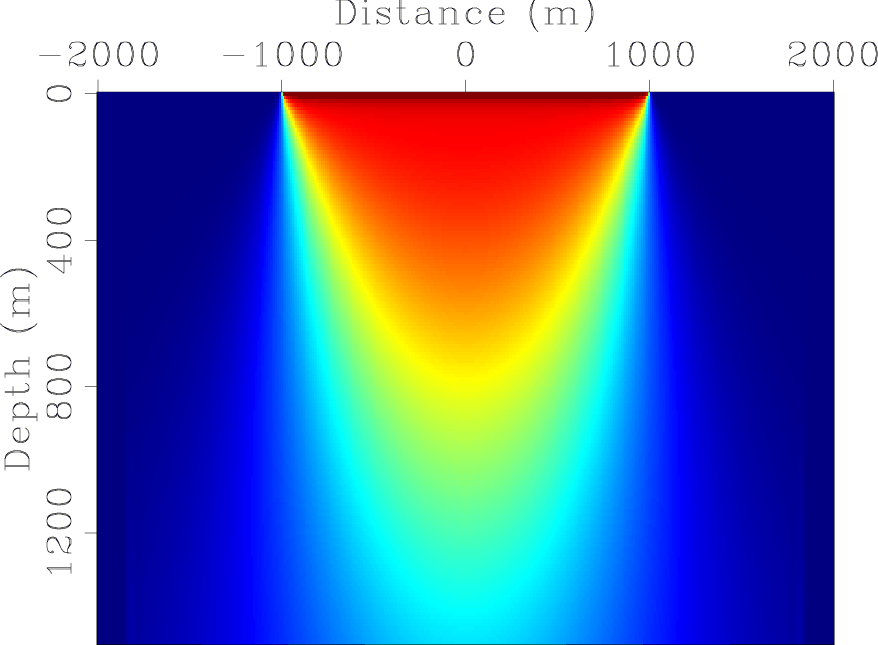
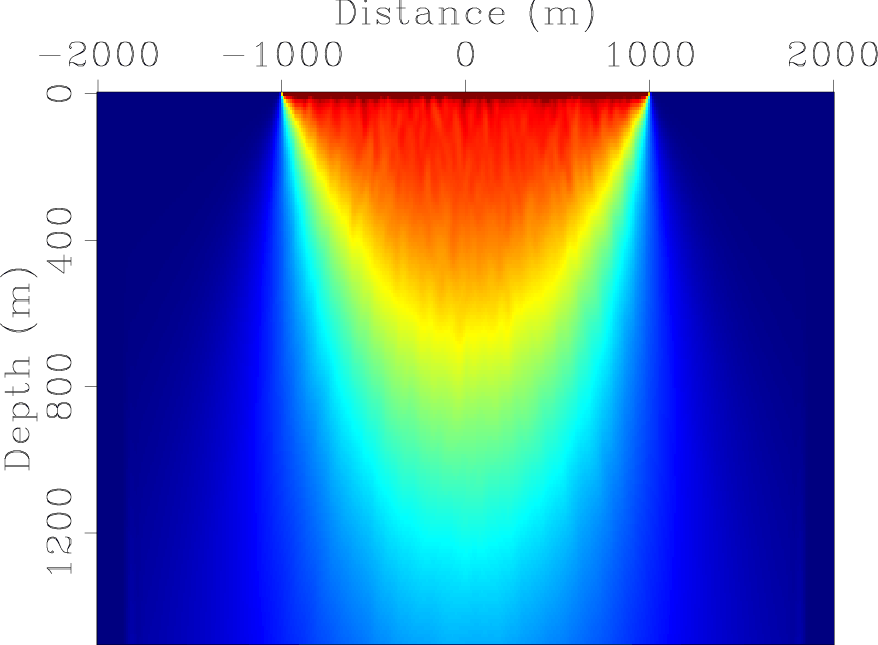
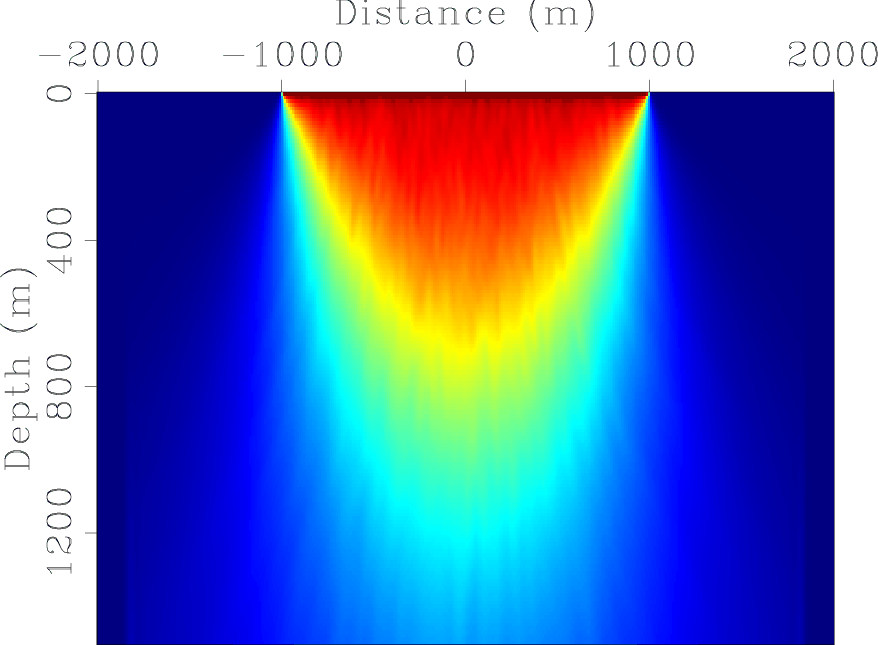
|
|---|
|
hess-exact,hess-random,hess-simul-mixed
Figure 1. The diagonal part of the Hessian for a constant-velocity model. (a) The exact Hessian; (b) the receiver-side randomly phase-encoded Hessian and (c) the simultaneously phase-encoded Hessian with a mixed phase encoding which combines both random and plane-wave encoding functions. [CR] |
|
|
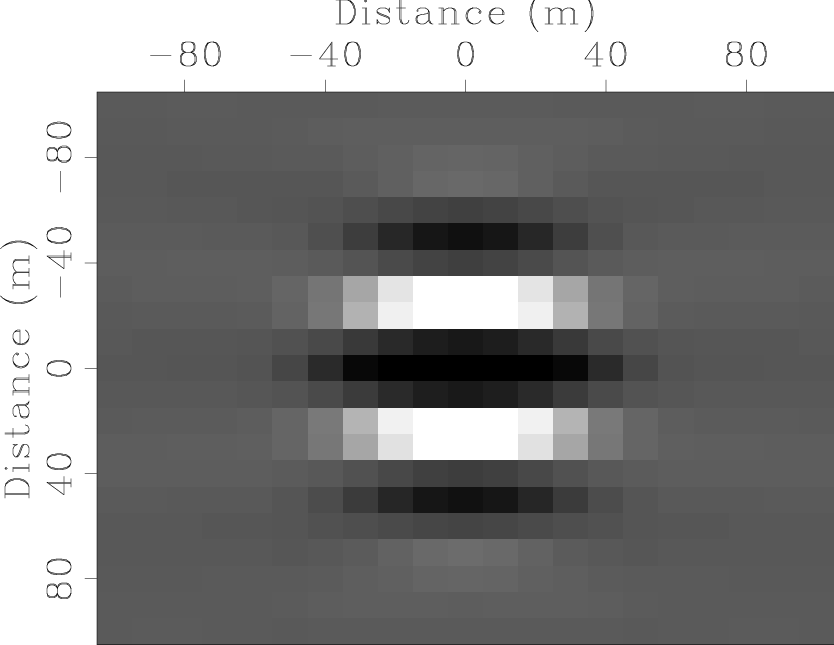
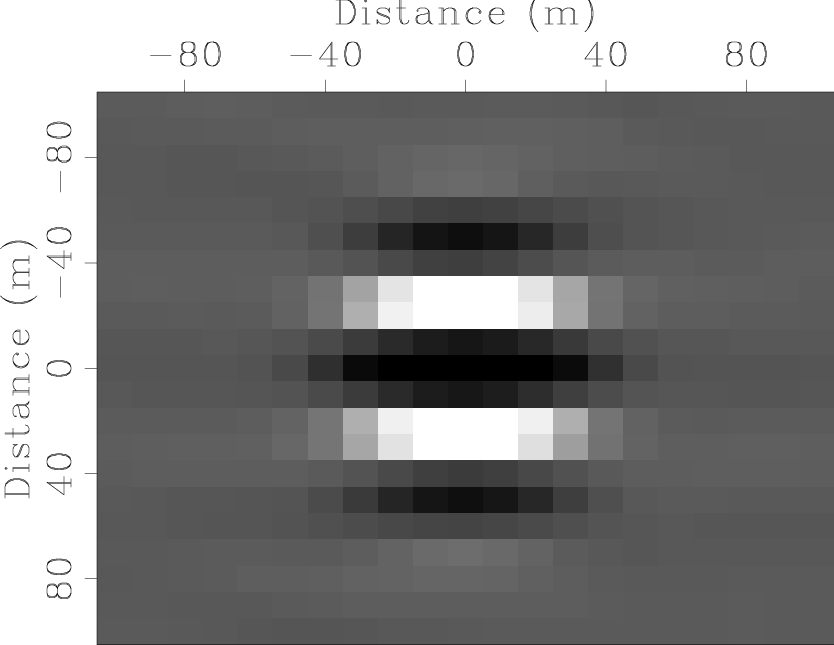
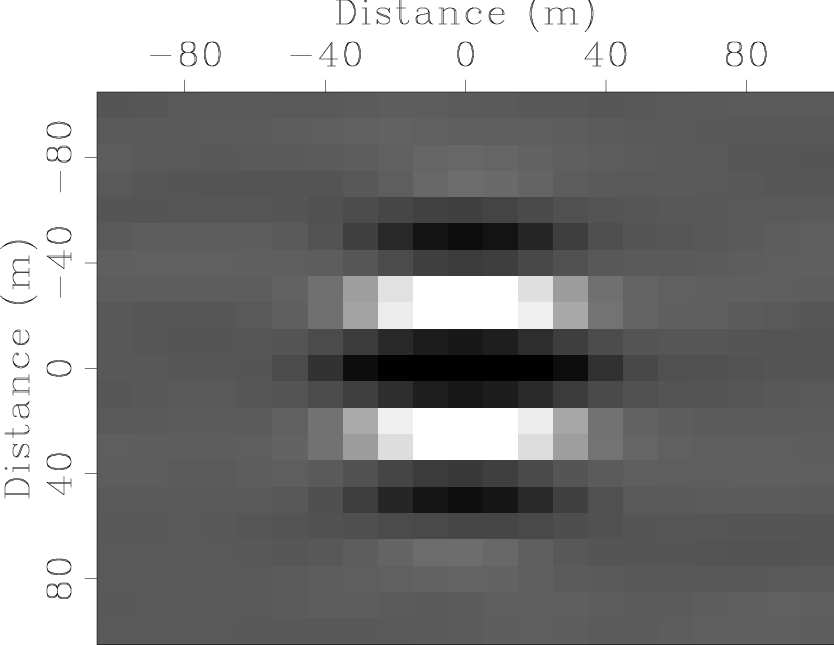
|
|---|
|
hess-exact-offd1,hess-random-offd1,hess-simul-mixed-offd1
Figure 2. The off-diagonal elements of the Hessian for a image point (a row of the Hessian). (a) The exact Hessian; (b) the receiver-side randomly phase-encoded Hessian and (c) the simultaneously phase-encoded Hessian with a mixed phase encoding which combines both random and plane-wave encoding functions. [CR] |
|
|
|
|
|
|
Target-oriented least-squares migration/inversion with sparseness constraints |